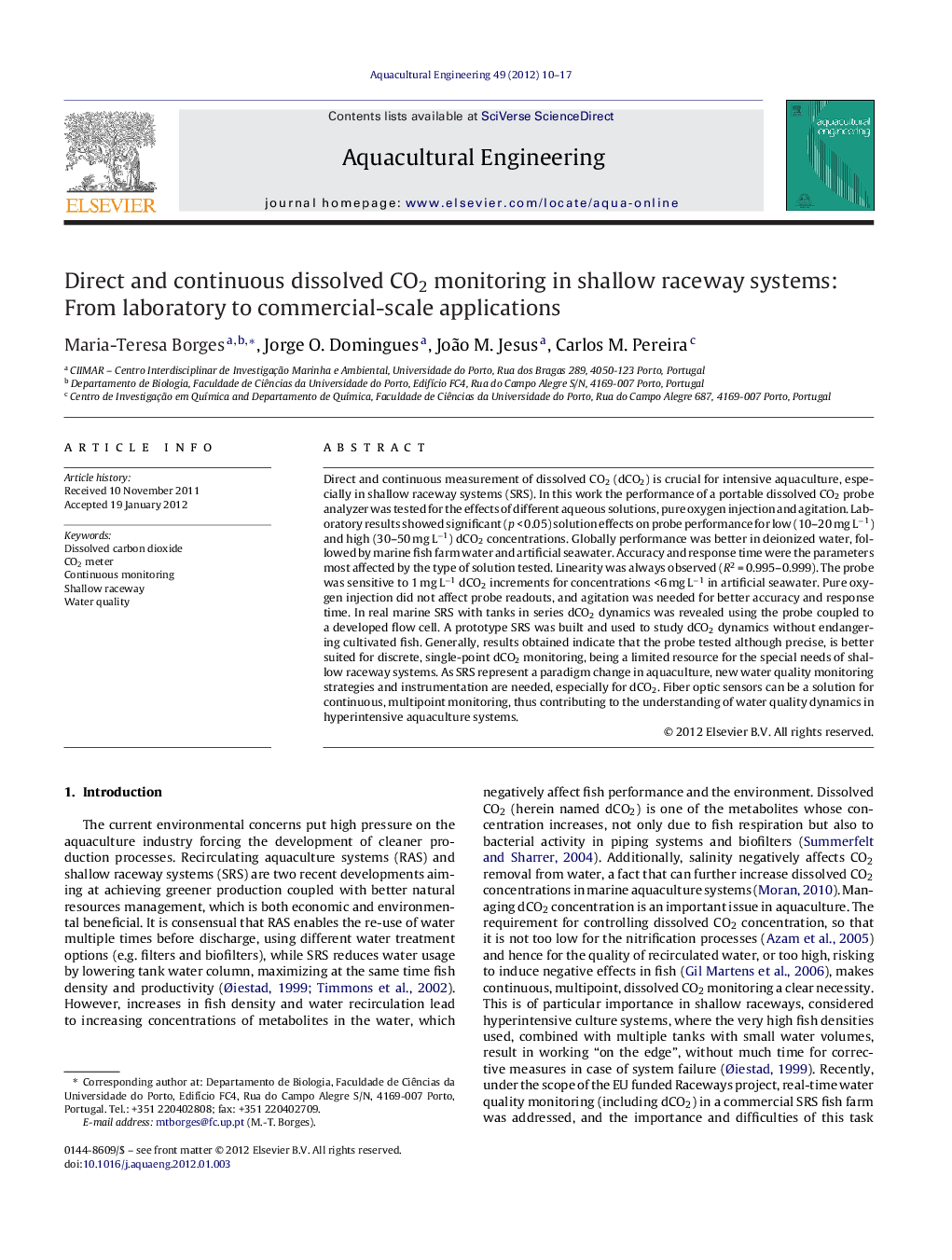| Article ID | Journal | Published Year | Pages | File Type |
|---|---|---|---|---|
| 4527273 | Aquacultural Engineering | 2012 | 8 Pages |
Direct and continuous measurement of dissolved CO2 (dCO2) is crucial for intensive aquaculture, especially in shallow raceway systems (SRS). In this work the performance of a portable dissolved CO2 probe analyzer was tested for the effects of different aqueous solutions, pure oxygen injection and agitation. Laboratory results showed significant (p < 0.05) solution effects on probe performance for low (10–20 mg L−1) and high (30–50 mg L−1) dCO2 concentrations. Globally performance was better in deionized water, followed by marine fish farm water and artificial seawater. Accuracy and response time were the parameters most affected by the type of solution tested. Linearity was always observed (R2 = 0.995–0.999). The probe was sensitive to 1 mg L−1 dCO2 increments for concentrations <6 mg L−1 in artificial seawater. Pure oxygen injection did not affect probe readouts, and agitation was needed for better accuracy and response time. In real marine SRS with tanks in series dCO2 dynamics was revealed using the probe coupled to a developed flow cell. A prototype SRS was built and used to study dCO2 dynamics without endangering cultivated fish. Generally, results obtained indicate that the probe tested although precise, is better suited for discrete, single-point dCO2 monitoring, being a limited resource for the special needs of shallow raceway systems. As SRS represent a paradigm change in aquaculture, new water quality monitoring strategies and instrumentation are needed, especially for dCO2. Fiber optic sensors can be a solution for continuous, multipoint monitoring, thus contributing to the understanding of water quality dynamics in hyperintensive aquaculture systems.
► A commercially available CO2 probe was tested for continuous dissolved CO2 monitoring in shallow raceways systems. ► Probe accuracy and response time were significantly affected by the type of aqueous solution used. ► Continuous monitoring is not possible without proper agitation, limiting probe utilization in real fish farms. ► A developed flow-cell enabled CO2 dynamics assessment in real farming conditions. ► Fiber optic sensors can be a solution for continuous and multipoint dissolved CO2 monitoring.
